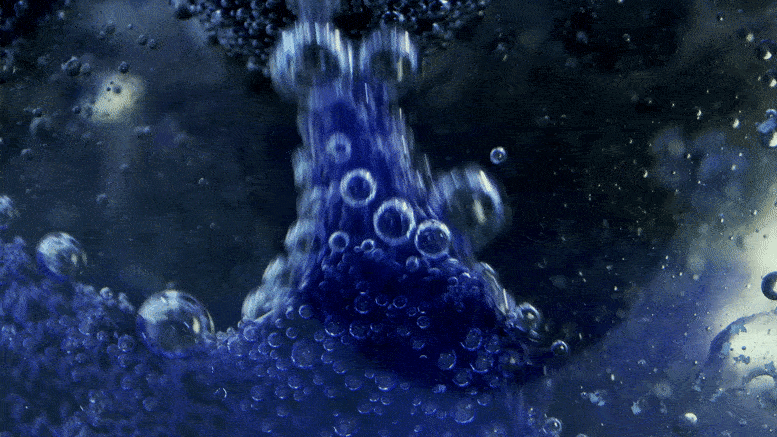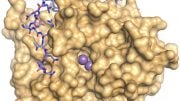
Researchers have created an oxygen-evolving catalyst on nickel foam at room temperature in minutes. When combined with a hydrogen-evolving catalyst, it enables efficient seawater splitting at low voltage.
Fast, one-step assembly at room temperature yields high efficiency at low cost.
Seawater makes up about 96% of all water on earth, making it a tempting resource to meet the world’s growing need for clean drinking water and carbon-free energy. And scientists already have the technical ability to both desalinate seawater and split it to produce hydrogen, which is in demand as a source of clean energy.
But existing methods require multiple steps performed at high temperatures over a lengthy period of time in order to produce a catalyst with the needed efficiency. That requires substantial amounts of energy and drives up the cost.
Researchers from the University of Houston have reported an oxygen evolving catalyst that takes just minutes to grow at room temperature on commercially available nickel foam. Paired with a previously reported hydrogen evolution reaction catalyst, it can achieve industrially required current density for overall seawater splitting at low voltage. The work is described in a paper published in Energy & Environmental Science.
Zhifeng Ren, director of the Texas Center for Superconductivity at UH (TcSUH) and corresponding author for the paper, said speedy, low-cost production is critical to commercialization.
“Any discovery, any technology development, no matter how good it is, the end cost is going to play the most important role,” he said. “If the cost is prohibitive, it will not make it to market. In this paper, we found a way to reduce the cost so commercialization will be easier and more acceptable to customers.”

A team of researchers led by Zhifeng Ren, director of the Texas Center for Superconductivity at the University of Houston, has reported an oxygen evolving catalyst that takes just minutes to grow at room temperature and is capable of efficiently producing both clean drinking water and hydrogen from seawater. Credit: University of Houston
Ren’s research group and others have previously reported a nickel-iron-(oxy)hydroxide compound as a catalyst to split seawater, but producing the material required a lengthy process conducted at temperatures between 300 Celsius and 600 Celsius, or as high as 1,100 degrees Fahrenheit. The high energy cost made it impractical for commercial use, and the high temperatures degraded the structural and mechanical integrity of the nickel foam, making long-term stability a concern, said Ren, who also is M.D. Anderson Professor of physics at UH.
To address both cost and stability, the researchers discovered a process to use nickel-iron-(oxy)hydroxide on nickel foam, doped with a small amount of sulfur to produce an effective catalyst at room temperature within five minutes. Working at room temperature both reduced the cost and improved mechanical stability, they said.
“To boost the hydrogen economy, it is imperative to develop cost-effective and facile methodologies to synthesize NiFe-based (oxy)hydroxide catalysts for high-performance seawater electrolysis,” they wrote. “In this work, we developed a one-step surface engineering approach to fabricate highly porous self-supported S-doped Ni/Fe (oxy)hydroxide catalysts from commercial Ni foam in 1 to 5 minutes at room temperature.”
In addition to Ren, co-authors include first author Luo Yu and Libo Wu, Brian McElhenny, Shaowei Song, Dan Luo, Fanghao Zhang and Shuo Chen, all with the UH Department of Physics and TcSUH; and Ying Yu from the College of Physical Science and Technology at Central China Normal University.
Ren said one key to the researchers’ approach was the decision to use a chemical reaction to produce the desired material, rather than the energy-consuming traditional focus on a physical transformation.
“That led us to the right structure, the right composition for the oxygen evolving catalyst,” he said.
Reference: “Ultrafast room-temperature synthesis of porous S-doped Ni/Fe (oxy)hydroxide electrodes for oxygen evolution catalysis in seawater splitting” by Luo Yu, Libo Wu, Brian McElhenny, Shaowei Song, Dan Luo, Fanghao Zhang, Ying Yu, Shuo Chen and Zhifeng Ren, 2 June 2020, Energy & Environmental Science.
DOI: 10.1039/D0EE00921K









Good news and gives great hope for the future.
really like these subjects
The article speaks interchangeably about the catalyst production and the desalination + hydrolysis process using that catalyst.See to instance the paragraph:
Ren’s research group and others have previously reported a nickel-iron-(oxy)hydroxide compound as a catalyst to split seawater, but producing the material required a lengthy process conducted at temperatures between 300 Celsius and 600 Celsius, or as high as 1,100 degrees Fahrenheit. The high energy cost made it impractical for commercial use, and the high temperatures degraded the structural and mechanical integrity of the nickel foam, making long-term stability a concern, said Ren, who also is M.D. Anderson Professor of physics at UH.
300DegC makes it expensive and degrades the catalyst, probably refers to the use of the catalyst on water, not the catalyst production.
Dear researchers, please make sure to explain the research subject to the article writer, which, obviously in this case is not a technical person and cannot make the necessary distinctions himself.
… good luck with applications…